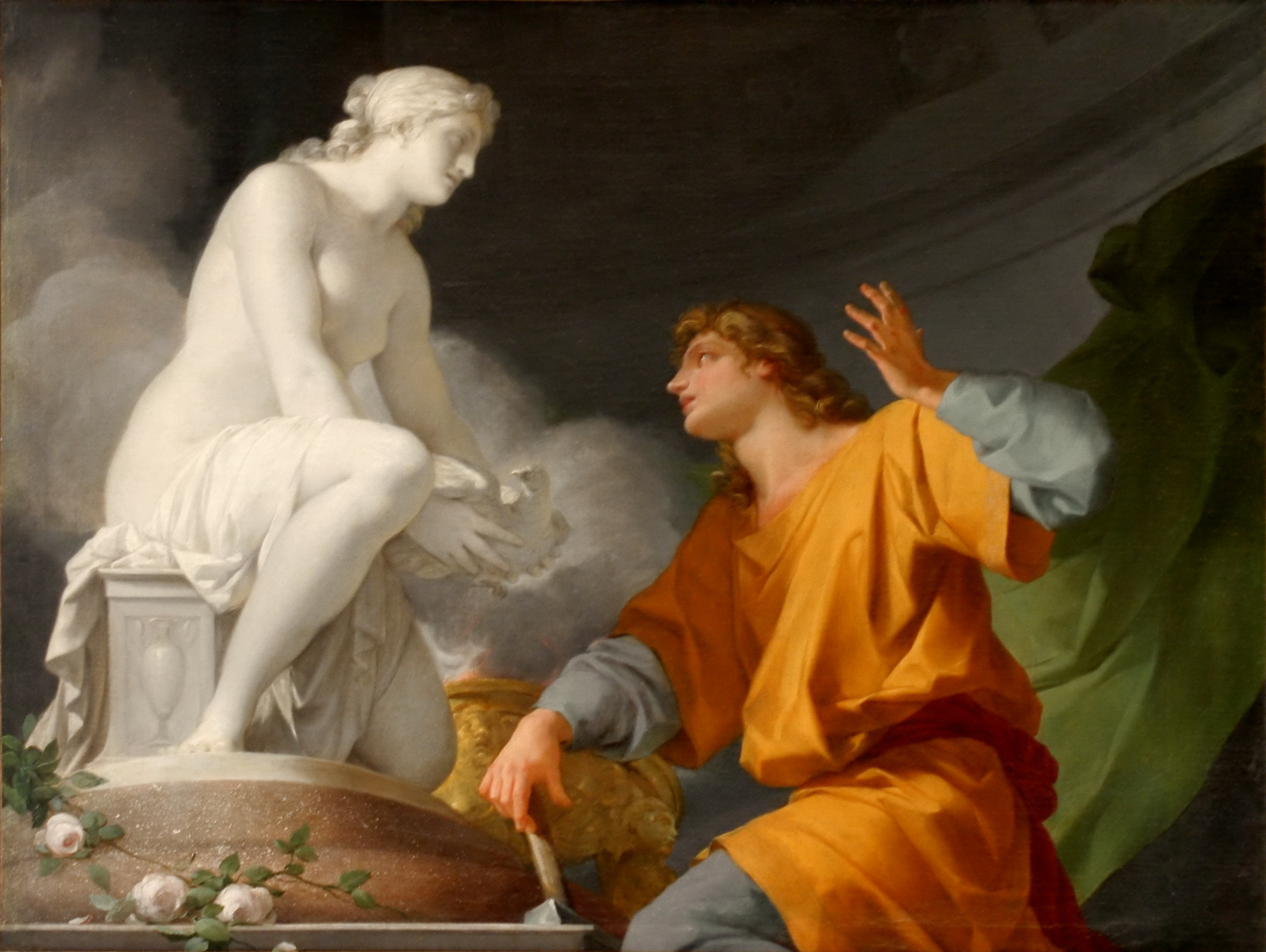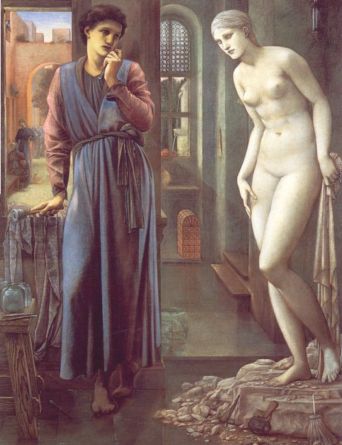Hello readers! The next mythological tale I will be posting
about today is the tale of Pygmalion

-black_bg.jpg)

Hello readers! The next mythological tale I will be posting
about today is the tale of Pygmalion
Who?
Pygmalion is all about the idea of how how women should look
are all around us. It’s all about how men model women and act as society,
telling women how the perfect female should look like and dominating over femininity.
It is also about the idea of worshipping
standards of beauty that are too unrealistic and completely out of reach to
humans. The myth is about Pygmalion, a sculptor, who creates a sculpture of a
woman, representing the ideal of womanhood, and falls in love with his own
creation, naming her Galatea. The goddess Venus brings her to life, and they
have a child together, named Paphos.
Why are they famous?
Pygmalion, in Greek mythology, was a king who was the father
of Metharme and, through her marriage to Cinyras, the grandfather of Adonis,
according to Apollodorus of Athens. The Roman poet Ovid, in his Metamorphoses,
Book X, relates the Pygmalion myth. He was a legendary figure of Cyprus, who carved
a woman out of ivory and names her Galatea. This occurs after he withdraws from
his city after seeing the Propoetides prostituting themselves (they denied the
divinity of Aphrodite and they were reduced to prostitution) and fell in love
with his created statue. When Aphrodite's festival day came, and Pygmalion made
offerings at the altar of Aphrodite, he quietly wished for a bride who would be
"the living likeness of my ivory girl", too afraid to ask for what he
truly desired. When he returned home, he kissed his ivory statue and found that
the lips felt warm. He kissed it again, touched her breasts with his hand and
found that the ivory had lost its hardness; she became alive. Aphrodite granted
Pygmalion's wish. Some versions state that it was Venus who granted the wish. In
Ovid’s version, they have a son, Paphos, from whom the island's name is derived.
This story was the inspiration for many artists: Jean-Léon
Gérôme depicted the moment of transformation; George Bernard Shaw’s Pygmalion
in turn provided the basis of Alan Jay Lerner and Frederick Loewe’s musical, My
Fair Lady. It has also inspired many paintings, some of which have been shown
above, and many more poems and prose. Carol Ann Duffy’s version is one my
favourite readings of the myth:
Cold, I was, like snow,like ivory.
I thought He will not touch me,
but he did.
He kissed my stone-cool lips.
I lay still
as though I’d died.
He stayed.
He thumbed my marbled eyes.
He spoke -
blunt endearments, what he’d do and how.
His words were terrible.
My ears were sculpture,
stone-deaf shells.
I heard the sea.
I drowned him out.
I heard him shout.
He brought me presents, polished pebbles,
little bells.
I didn’t blink,
was dumb.
He brought me pearls and necklaces and rings.
He called them girly things.
He ran his clammy hands along my limbs.
I didn’t shrink,
played statue, shtum.
He let his fingers sink into my flesh,
he squeezed, he pressed.
I would not bruise.
He looked for marks,
for purple hearts,
for inky stars, for smudgy clues.
His nails were claws.
I showed no scratch, no scrape, no scar.
He propped me up on pillows,
jawed all night.
My heart was ice, was glass.
His voice was gravel, hoarse.
He talked white black.
So I changed tack,
grew warm, like candle wax,
kissed back,
was soft, was pliable,
began to moan,
got hot, got wild,
arched, coiled, writhed,
begged for his child,
and at the climax
screamed my head off -
all an act.
And haven’t seen him since.
Simple as that.
Thanks for reading!
No comments:
Post a Comment